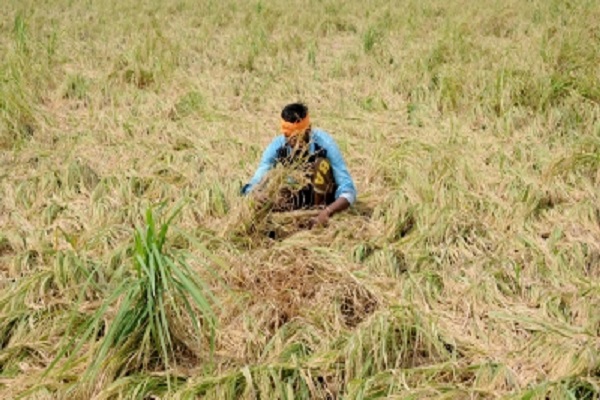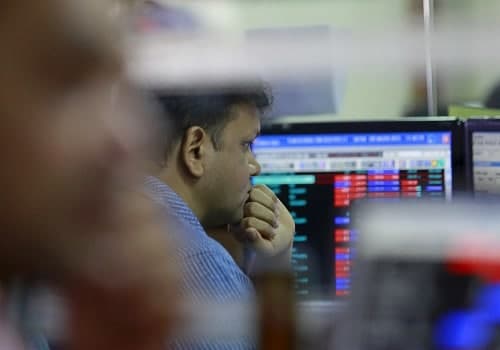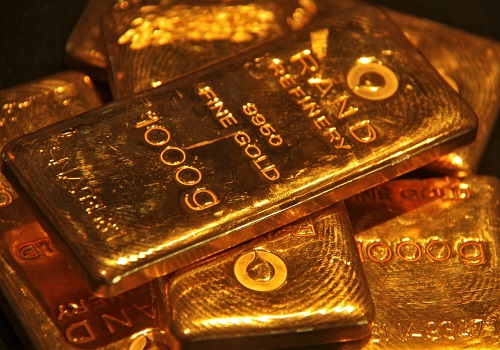Gold trading range for the day is 74975-79435 - Kedia Advisory

Gold
Gold prices declined by 2.36% to settle at 76,655 as the dollar remained strong, spurred by "Trump trades" after Donald Trump claimed victory in the 2024 presidential election against Kamala Harris. This political development, coupled with expectations of a quarter-point rate cut by the Federal Reserve following its two-day policy meeting, has influenced market dynamics. The Fed is anticipated to announce another rate reduction after its 50 basis point cut in September, potentially adding pressure on non-yielding assets like gold. On the physical front, the Perth Mint reported a decline in gold sales in October, while silver sales fell to a four-month low. In India, gold demand increased due to festival-related purchases, although volumes were subdued by record-high prices. Dealers initially charged a premium of $1 per ounce on Dhanteras but later shifted to offering a discount of up to $5. In other markets, Singapore saw gold traded at a $0.80 discount to a $2.20 premium, while Chinese dealers offered discounts of $11-$14, and Japanese traders quoted at a discount of $0.25 to a $0.50 premium. According to the World Gold Council (WGC), global gold demand remained steady year-on-year at 1,176.5 metric tons in Q3, with rising investment offsetting weaker jewelry consumption. However, total gold demand, including OTC trading, hit a third-quarter record of 1,313 tons, driven by a 97% rise in OTC flows. Gold ETFs saw inflows of 95 tons, marking the first positive quarter since early 2022, though bar and coin investment dropped by 9%. On the supply side, mine production and recycling rose by 6% and 11%, respectively. Technically, gold is in a phase of long liquidation with a significant 11.8% drop in open interest to 10,896. Support is at 75,815, with further downside potential to 74,975, while resistance lies at 78,045; surpassing this could test 79,435.
Trading Ideas:
* Gold trading range for the day is 74975-79435.
* Gold dropped with dollar holding strong as 'Trump trades' soared.
* The Fed's two-day policy meeting ends and markets broadly expect the Fed to announce a quarter-point rate cut.
* Investors are also closely monitoring control of Congress, as the results could significantly affect future spending and tax policies.
Silver
Silver prices dropped sharply by 4.04%, closing at 90,820, as renewed optimism over the "Trump trade" strengthened the dollar, putting pressure on safe-haven assets. Donald Trump's victory in the 2024 presidential race has raised expectations for policies that could stimulate growth through tax cuts and increased spending, pushing the dollar to a four-month high. This scenario has dampened demand for assets like silver, as the likelihood of elevated interest rates remains strong. Market attention also focuses on the Federal Reserve's two-day policy meeting, where a cautious 25-basis-point rate cut is anticipated, reinforcing expectations of a higher-rate environment. The Congressional balance of power is another focal point, as a sweeping win by either party could lead to significant fiscal and tax policy shifts, impacting silver and broader financial markets. Meanwhile, China’s National People’s Congress is expected to unveil additional fiscal stimulus measures, which could impact global silver demand through industrial usage. On the physical demand side, India's silver imports have surged due to increased consumption in solar panel production and electronics manufacturing, along with heightened investor interest. In the first half of 2024 alone, India imported 4,554 tons of silver, a massive rise from 560 tons in the same period last year, as inventory restocking and rising industrial demand fueled imports. From a technical perspective, the market is under fresh selling pressure, as seen in a 7.1% increase in open interest to 25,039 contracts while prices declined by 3,828 rupees. Silver is currently supported at 89,180, with further downside testing possible at 87,545 if this level breaks. Resistance stands at 93,290, and a move above could see prices reaching 95,765.
Trading Ideas:
* Silver trading range for the day is 87545-95765.
* Silver dropped as the dollar held strong after Donald Trump claimed victory in 2024 presidential contest.
* Renewed optimism surrounding the "Trump trade" has boosted market sentiment, putting downward pressure on safe-haven assets.
* Attention is also focused on the Federal Reserve’s upcoming two-day policy meeting
Crude oil
Crude oil prices rose by 0.35% to close at 6,075, driven by OPEC+’s decision to delay planned output increases by a month. The group announced it would extend its existing 2.2 million barrels per day (bpd) production cut into December, holding off on an earlier scheduled increase of 180,000 bpd. This move reflects OPEC+’s response to falling prices and weak demand. Geopolitical concerns, particularly around potential retaliatory strikes by Iran on Israel, are adding to market volatility. The upcoming U.S. presidential election, where polls indicate a tight race between Kamala Harris and Donald Trump, is also keeping market participants cautious. In the U.S., anticipation of a 25 basis points interest rate cut by the Federal Reserve is affecting market expectations. Meanwhile, China's National People’s Congress is set to discuss further stimulus measures to support the slowing economy, especially targeting local government debt. Additionally, U.S. oil production rose by 1.5% in August to a record 13.4 million bpd, topping the previous high of 13.31 million bpd from December 2023. Inventories in the U.S. rose by 2.149 million barrels for the week ending November 1, 2024, above expectations, while gasoline and distillate stocks also increased, indicating weaker-than-expected demand. The EIA lowered its forecast for global oil demand growth, now expecting an increase of 1.2 million bpd to 104.3 million bpd next year, down by 300,000 bpd from prior estimates. Technically, crude oil is experiencing fresh buying, with a 5.82% increase in open interest to 14,026. Support lies at 5,935, with further potential down to 5,794, while resistance is anticipated at 6,173; a move above this could see prices test 6,270.
Trading Ideas:
* Crudeoil trading range for the day is 5794-6270.
* Crude oil gains as traders continued to react positively to OPEC+'s decision to delay production increases.
* The group announced it would extend its current output cut of 2.2 mbpd into December.
* Money managers cut their net long U.S. crude futures and options positions – CFTC
Natural gas
Natural gas prices increased by 2.61% to settle at 232 as Gulf of Mexico oil and gas producers began shutting down operations in preparation for Hurricane Rafael, which has intensified to a Category 1 storm with winds of 90 mph. The storm is expected to continue strengthening as it heads towards Cuba, raising concerns over potential supply disruptions. Temperatures across the U.S. are anticipated to stay above average through mid-November, with cooler weather arriving later in the month. U.S. LNG exports have seen a dip this month, largely due to a temporary shutdown at Freeport LNG. However, production is set to rise towards the end of 2024 and into 2025, supported by new LNG projects like Venture Global’s Plaquemines plant and Cheniere Energy’s Texas expansion. Despite recent gains, natural gas prices remain over 10% below October’s levels of $3.1/MMBtu, attributed to low heating demand and robust inventories. The average gas output in the Lower 48 U.S. states held steady at 101.3 billion cubic feet per day (bcfd) for November so far, compared to the record 105.3 bcfd in December 2023. The U.S. Energy Information Administration (EIA) projects that dry gas production will slightly decline in 2024 to 103.5 bcfd as companies continue to curb drilling activity due to lower prices. Consumption is expected to rise from 89.1 bcfd in 2023 to 90.1 bcfd in 2024 before easing back in 2025. On the technical side, natural gas is experiencing short covering, with a decrease in open interest by 8.75% to 20,598. Support is at 225.5, with a potential dip to 219.1, while resistance stands at 237.3; a break above this level could see prices test 242.7.
Trading Ideas:
* Naturalgas trading range for the day is 219.1-242.7.
* Natural gas gained as oil and gas producers in the Gulf of Mexico began shutting operations ahead of Hurricane Rafael.
* Temperatures are expected to remain above average until mid-November, with cooler weather forecasted later in the month.
* US LNG exports are falling this month largely due to a temporary shutdown at Freeport LNG.
Copper
Copper prices fell by 3.86% to 826.35 amid concerns that former President Donald Trump’s victory in the U.S. presidential election may lead to increased tariffs and rising tensions with China, which could impact economic growth and dampen copper demand. China, the world’s largest copper consumer, would likely face economic pressure under higher tariffs, reducing its appetite for the industrial metal. Additionally, the dollar’s strength, supported by “Trump trades,” has made dollar-denominated commodities like copper more costly for buyers using other currencies, adding to the metal's bearish momentum. Investors are also closely monitoring developments from China's National People’s Congress, where additional fiscal stimulus is anticipated. Chinese Premier Li Qiang has reaffirmed confidence in reaching the nation's GDP target, aided by policy measures, while recent data showing an expansion in manufacturing activity in October suggests that stimulus efforts are aiding economic recovery. On the supply front, Chilean state miner Codelco reported a 4.9% decline in copper output from January to September, totaling 918,000 metric tons. Meanwhile, the global refined copper market showed a 54,000-ton surplus in August, down from a 73,000-ton surplus in July, as per the International Copper Study Group (ICSG). However, China's unwrought copper imports rose by 15.4% in September from the previous month, reaching 479,000 metric tons, driven by seasonal demand and improved consumption forecasts. Technically, the market is experiencing fresh selling pressure, as open interest increased by 16.41% to 9,117 contracts while prices declined by 33.2 rupees. Copper is now supported at 816.4, with a potential test of 806.4 if this level breaks. Resistance is expected at 845.7, and a move above could push prices toward 865.
Trading Ideas:
* Copper trading range for the day is 806.4-865.
* Copper dropped after victory for former President Donald Trump in the US presidential election raised concerns over higher tariffs.
* Premier Li Qiang expressed confidence that China would meet its GDP target for the year.
* Copper output from Chile's Codelco down nearly 5% in January – September
Zinc
Zinc prices fell by 3.23%, closing at 278.55, as new inventory inflows alleviated fears of supply shortages. A single party’s control of up to 79% of available LME zinc stocks recently heightened concerns over limited short-term supply. However, this tension eased with the arrival of 10,275 tons into LME warehouses in Singapore, raising total stocks to 242,425 tons. This inventory increase led to a narrowing of the premium for cash contracts over three-month zinc to around $18 per ton, down from a peak of $58. Despite this, upside potential remains limited as smelters continue to face raw material shortages, curbing refined zinc production. Additionally, China's industrial profits plunged in September, signaling weak demand and a steep drop in producer prices. Meanwhile, Russian zinc producer Ozernoye is facing sanctions-related production challenges, casting doubt on its planned output of 320,000 metric tons for 2025—about 2.5% of projected global supply. In September 2024, China's refined zinc production rose over 2% month-on-month but decreased over 8% year-on-year, due to smelters resuming operations after maintenance. Production is anticipated to increase modestly in October, with growth concentrated in Inner Mongolia, Shaanxi, and Hunan. Technically, zinc is experiencing fresh selling, with open interest rising by 6.84% to 3,094. Support is seen at 275.6, with further potential down to 272.5, while resistance lies at 283.9; breaking this level could lead prices to test 289.1. This indicates continued caution in the market amidst easing supply concerns and production challenges.
Trading Ideas:
* Zinc trading range for the day is 272.5-289.1.
* Zinc prices dropped as inventory inflows eased concerns of supply shortages.
* However upside seen limited amid a raw materials squeeze forces smelters to reduce production of refined metal.
* The deliveries are behind the narrowing premium for the cash contract over three-month zinc to about $18 a ton, down from peak above $58 a ton.
Aluminium
Aluminium prices declined by 1.29%, closing at 240.25, as Donald Trump’s U.S. presidential victory raised concerns over potential reversals in climate-related policies, such as the Inflation Reduction Act (IRA). Trump has proposed rescinding unspent IRA funds, which support key electrification initiatives like EVs, solar, and wind energy, raising questions about demand for aluminium, a critical material in these sectors. The IRA had been expected to drive investments in materials like aluminium outside China, positioning the metal for significant demand growth. In the global market, supply disruptions emerged, as Guinea suspended exports from Guinea Alumina Corporation (GAC), a major supplier of alumina. Meanwhile, Goldman Sachs raised its aluminium price forecast for 2025, citing an expected demand increase in China supported by new stimulus measures, revising the price projection to $2,700 per ton from $2,540. Additionally, global aluminium output in September rose by 1.3% year-on-year to 6.007 million tons, driven in part by increased production in China, which saw a 1.2% rise from the previous year. Improved hydropower availability in Yunnan province has also supported steady aluminium production. From a technical perspective, the aluminium market is witnessing long liquidation, as evidenced by a 5.46% decline in open interest, settling at 3,495 contracts while prices dropped by 3.15 rupees. Aluminium is currently supported at 237.6, with further downside possible to 235 if this level is breached. Resistance is expected at 243, and a move above this level could lead to testing 245.8. This setup reflects ongoing uncertainty tied to policy shifts, supply constraints, and evolving demand dynamics.
Trading Ideas:
* Aluminium trading range for the day is 235-245.8.
* Aluminium prices tumbled as victory for Trump spurred concerns that major electrification initiatives would be rolled back
* Goldman Sachs raised its 2025 aluminum price forecasts citing higher demand potential in China following stimulus measures.
* Global primary aluminium output in September rose 1.3% year on year to 6.007 million tonnes – IAI
Cottoncandy
Cottoncandy prices rose by 0.25% to settle at 55,610, driven by concerns over India’s cotton production, which is forecasted to decline by 7.4% in 2024/25 to 30.2 million bales due to reduced planting area and crop damage from excessive rainfall. The USDA has also revised India’s cotton production estimate to 30.72 million bales and reduced ending stocks to 12.38 million bales, highlighting the impact of adverse weather and pest infestations. India’s cotton planting area has decreased significantly, with 110.49 lakh hectares sown this season, down from 121.24 lakh hectares last year, as many farmers in Gujarat shifted to groundnuts due to better returns. This production shortfall is expected to impact India’s exports, projected to fall to 1.8 million bales from 2.85 million a year ago, while imports are expected to rise to 2.5 million bales, supporting global prices. Despite this, weak demand in the yarn market and payment challenges could limit price gains. Globally, the USDA forecasts higher cotton production in countries like China, Brazil, and Argentina, offsetting declines in the U.S. and Spain. The world cotton trade has been revised lower, primarily due to reduced demand from China, while global ending stocks are forecasted at 76.3 million bales. Technically, the market is under short covering with open interest unchanged at 164 contracts and prices up by 140 rupees. Cottoncandy finds support at 55,520, with further downside likely to test 55,420 if this level is breached. Resistance is anticipated at 55,710, and a break above could push prices toward 55,800. This setup reflects both the limited domestic supply and evolving international demand, creating a balanced outlook for cotton prices.
Trading Ideas:
* Cottoncandy trading range for the day is 55420-55800.
* Cotton gains as India's cotton production estimated to drop to 7-year low in 2024-25
* India's cotton production in 2024/25 is likely to fall by 7.4% from a year ago to 30.2 million bales.
* Cotton production is projected to increase in China, Brazil, and Argentina, more than offsetting reductions in the US and Spain.
* In the global 2024/25 cotton balance sheet, beginning stocks, production and consumption are increased.
Turmeric
Turmeric prices increased by 2.6% to close at 13,176, driven by concerns over crop damage from heavy rains, with losses potentially higher than previously estimated. While prices have risen due to these fears, gains are somewhat limited by lower demand and increased arrivals in the market. Additionally, turmeric acreage for the upcoming season is projected to be 30-35% higher than last year, indicating a likely increase in production. Recent weather patterns, including dry spells followed by light rains, have generally supported crop growth, with regions like Vidarbha and Telangana receiving 20 mm and 18 mm of rain, respectively. Despite these favorable conditions, the extended period until harvest, combined with low supply and unpredictable weather, could drive prices upward in the coming months. In Indonesia, dry weather has sped up harvesting to peak levels, adding supply pressure. Increased acreage and lower export demand may also contribute to potential price declines if demand does not pick up. Turmeric sowing in Erode has reportedly doubled compared to last year, with sowing in Maharashtra, Telangana, and Andhra Pradesh up by 30-35%. Last year, turmeric was sown in approximately 3-3.25 lakh hectares; this year, that area is estimated to increase to 3.75-4 lakh hectares. India’s turmeric production in 2024 was around 45-50 lakh bags, and with the upcoming crop, availability is projected at around 70-75 lakh bags, suggesting a supply-demand balance that could impact prices positively in 2025. Technically, the market is under short covering with a 3.69% drop in open interest, settling at 11,620 contracts. Support is at 12,818, with further downside to 12,462, while resistance is at 13,476; a break above this could push prices to test 13,778.
Trading Ideas:
* Turmeric trading range for the day is 12462-13778.
* Turmeric gains amid reports of crop damage due to heavy rains.
* However upside seen limited due to lower demand amid a rise in arrivals.
* Recent weather conditions, which include dry weather followed by light rains, are benefiting crop growth.
* In Nizamabad, a major spot market, the price ended at 13437.05 Rupees dropped by -0.73 percent.
Jeera
Jeera prices rose by 3.85% to settle at 24,805, driven by short covering after recent declines amid increasing arrivals. Daily arrivals in Unjha have averaged 15,000 bags, while farmers are estimated to hold around 35% of their current season's stock. Despite the current surplus, export prospects for jeera are brightening post-Diwali, with expectations of increased demand from international buyers in November and December. India remains the world's primary supplier of affordable cumin, with Indian jeera priced at $3,050 per tonne, notably lower than Chinese cumin by $200–250, which is likely to attract global buyers, particularly from China. Rajasthan, a major cumin-producing region, is expected to see a 10-15% reduction in cultivation area, adding to the potential supply constraints, as overall production is projected to drop by 10%. Rising geopolitical tensions in the Middle East have also boosted demand for Indian jeera, with exports in July-September reaching 52,022 metric tonnes—up 128% year-on-year. Between April and August 2024, jeera exports increased by 61.44%, totaling 103,614.46 tonnes compared to the same period last year, driven by heightened demand from Europe and the Middle East. Technically, the jeera market is under short covering, as indicated by an 8.48% drop in open interest, settling at 1,425 contracts, while prices gained 920 rupees. The market finds support at 23,970, with further downside testing possible at 23,120 if this level breaks. Resistance is now likely to be seen at 25,350, and a move above could push prices to 25,880. This setup reflects the interplay between lower supply forecasts and rising export demand, suggesting sustained price strength.
Trading Ideas:
* Jeera trading range for the day is 23120-25880.
* Jeera gains on short covering after prices dropped as arrival has increased.
* There is a possibility of 25 percent reduction in cumin sowing in Gujarat
* Carryover stock of 20 lakh bags of cumin is estimated in the new season
* In Unjha, a major spot market, the price ended at 24605.7 Rupees gained by 0.41 percent.
Views express by all participants are for information & academic purpose only. Kindly read disclaimer before referring below views





















